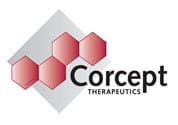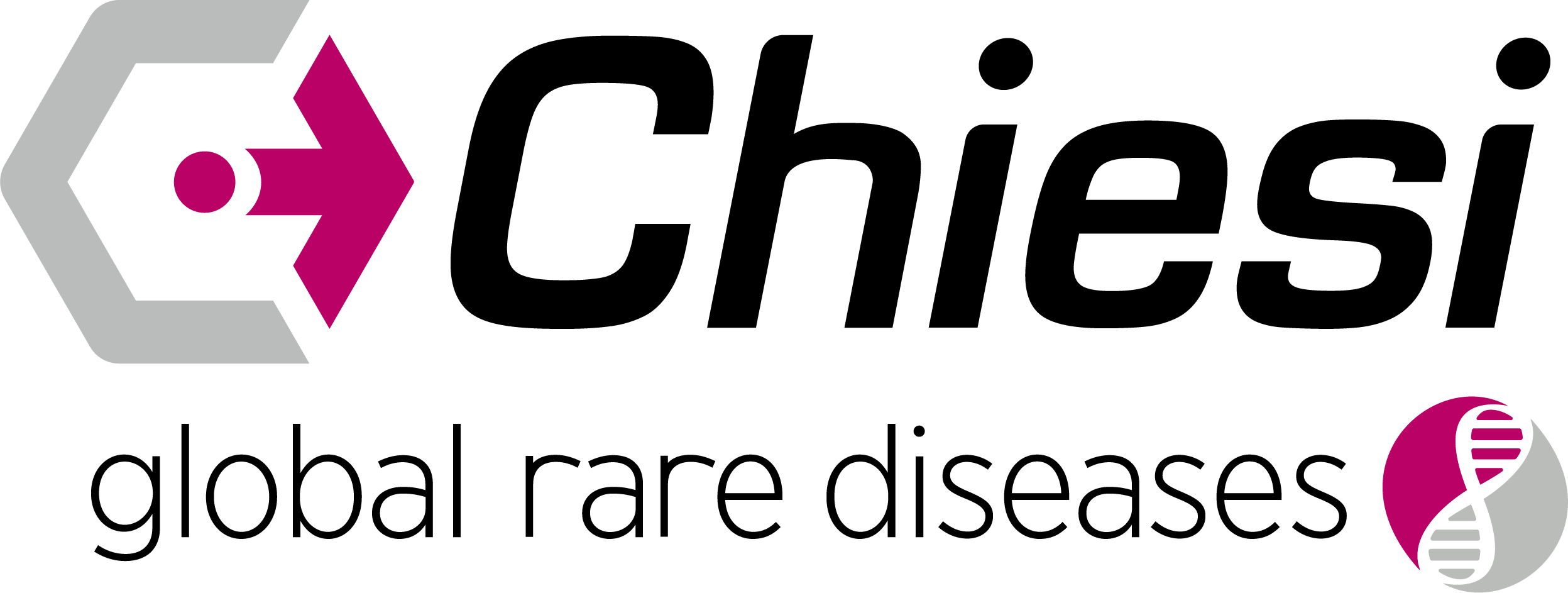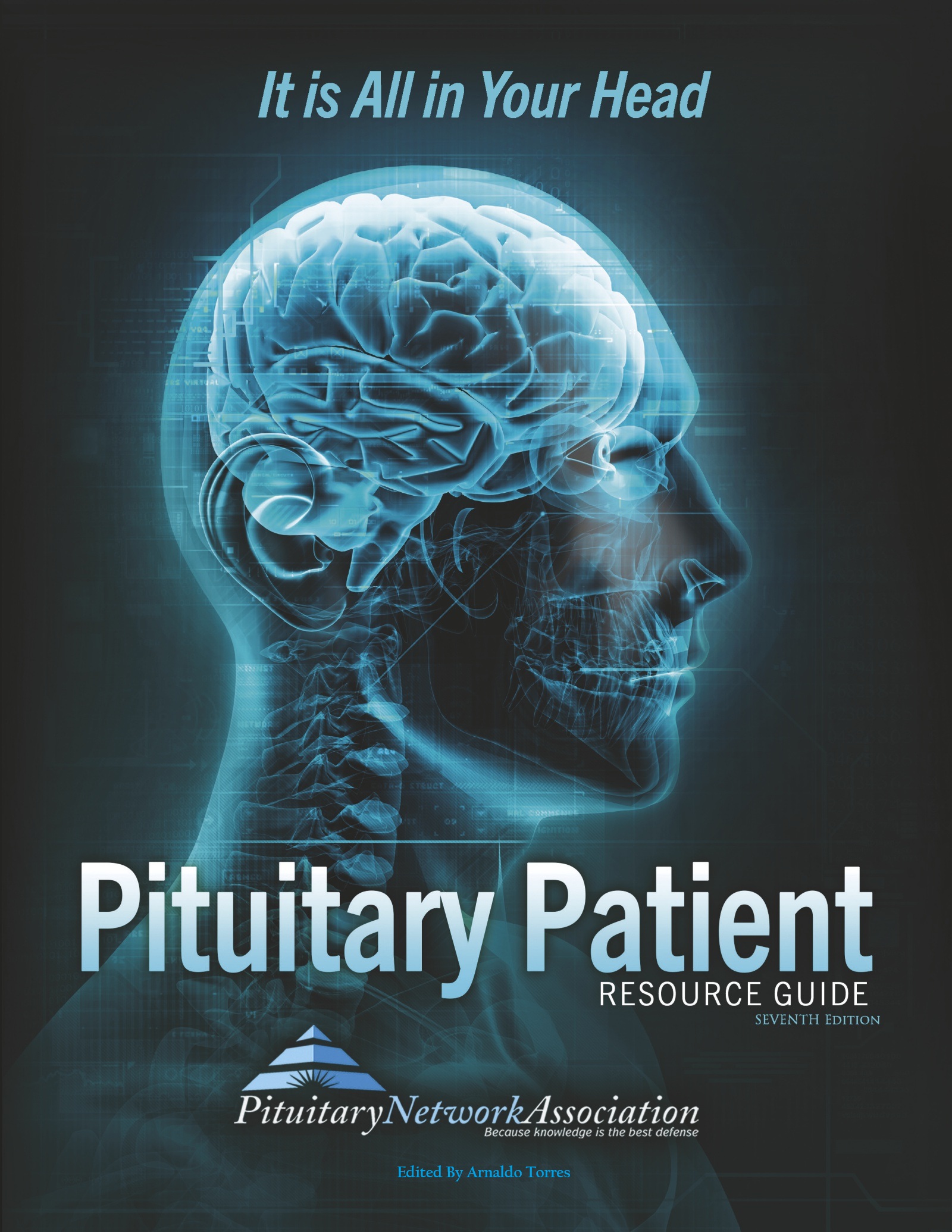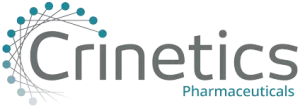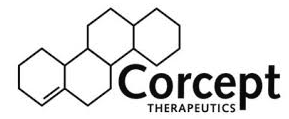News Articles February 2022
Written on 04 February 2022.
PNA Spotlight: Dr Kaisorn Chaichana
 Kaisorn Chaichana, MD, FACS, FAANS, is a board-certified neurosurgeon who specializes in brain tumor surgery, namely skull base surgery, endoscopic surgery, and minimally invasive keyhole surgery. He graduated Alpha Omega Alpha from Johns Hopkins Medical School and completed his neurosurgical residency and skull base fellowship also at Johns Hopkins. Following graduation, he was on staff at Johns Hopkins as an Assistant Professor of Neurosurgery, Oncology, and Otolaryngology-Head & Neck Surgery, before joining Mayo Clinic in Jacksonville, Florida. He is now a Professor of Neurosurgery and Oncology, Director of Brain Tumor Surgery, Director of Pituitary and Skull Base Surgery, and Neurosurgery Program Director. He has published over 200 peer reviewed articles, edited over 75 book chapters, and edited 3 books. He has received numerous awards and accolades for his clinical work and research on brain tumors. Dr. Chaichana was kind enough to answer some questions from the PNA. His answers follow.
Kaisorn Chaichana, MD, FACS, FAANS, is a board-certified neurosurgeon who specializes in brain tumor surgery, namely skull base surgery, endoscopic surgery, and minimally invasive keyhole surgery. He graduated Alpha Omega Alpha from Johns Hopkins Medical School and completed his neurosurgical residency and skull base fellowship also at Johns Hopkins. Following graduation, he was on staff at Johns Hopkins as an Assistant Professor of Neurosurgery, Oncology, and Otolaryngology-Head & Neck Surgery, before joining Mayo Clinic in Jacksonville, Florida. He is now a Professor of Neurosurgery and Oncology, Director of Brain Tumor Surgery, Director of Pituitary and Skull Base Surgery, and Neurosurgery Program Director. He has published over 200 peer reviewed articles, edited over 75 book chapters, and edited 3 books. He has received numerous awards and accolades for his clinical work and research on brain tumors. Dr. Chaichana was kind enough to answer some questions from the PNA. His answers follow.
What inspired you to choose your career path?
I have always had a passion for the intricacies of the central nervous system and have always been fascinated by neuroanatomy. During medical school, I was inspired to go into neurosurgery and, more specifically, brain tumor surgery because I had great mentors and was able to see how they were able to improve the lives of patients with brain tumors, including pituitary tumors, with skill and expertise not only in the operating room, but also in the clinic.
What is the primary focus of your work/research?
The primary focus of my work is on brain tumors, but namely skull base tumors including pituitary tumors, meningiomas, craniopharygiomas, and chordomas. I specialize in minimally invasive surgery, endoscopic surgery, and keyhole surgery.
What do you consider to be the future of your field?
The future of our field is to continue to develop safer and more efficient ways to achieve maximal resection. This includes better visualization including better optics, more efficient ways to reconstruct the skull base, and better tools to facilitate resection. However, hopefully, we can better understand the molecular mechanisms underlying these tumors to develop non-surgical ways to cure them.
What should patients know about your field/what deserves more recognition/awareness?
Brain tumor patients require multidisciplinary care. For someone with a pituitary tumor, it is important that they see a multidisciplinary team because their outcomes are tied into the team. This team should not only have a surgeon, but also other essential specialties including endocrinology, radiation oncology, otolaryngology, and ophthalmology, among others.
What would you like to convey about yourself to your patients?
I run a busy practice but I try and make myself as available as I can to my patients. I understand that they are going through a lot, and it is anxiety-provoking to have a pituitary tumor. I always try to treat each patient as they were my own family member.
Why did you get involved with the PNA and what is the extent of your involvement?
I have been excited to be a part of the PNA. Unlike a lot of other neurological and non-neurological conditions, there are very few associations focused on a certain pathology like the PNA. PNA provides patients with the tools to empower themselves to understand their disease process and management options.
Medical Corner: Endoscopic Surgery for Sellar Arachnoid Cysts
 This month the PNA Medical Corner features an article co-written by PNA cofounder Dr. Shereen Ezzat. The study looks at the use of endonasal endoscopic surgery to remove sellar arachnoid cysts and finds a simple cyst-opening technique and skull base reconstruction utilizing nasoseptal flaps can decrease the likelihood of a cerebrospinal fluid leak.
This month the PNA Medical Corner features an article co-written by PNA cofounder Dr. Shereen Ezzat. The study looks at the use of endonasal endoscopic surgery to remove sellar arachnoid cysts and finds a simple cyst-opening technique and skull base reconstruction utilizing nasoseptal flaps can decrease the likelihood of a cerebrospinal fluid leak.
Link: https://pubmed.ncbi.nlm.nih.gov/35217229/
World Neurosurg
.2022 Feb 22
doi: 10.1016/j.wneu.2022.02.072. Online ahead of print.
Endoscopic treatment of sellar arachnoid cysts via a simple cyst-opening technique: Long-term outcomes from a single center
Aristotelis Kalyvas 1, Matthias Milesi 2, Matheus Leite 3, Kaiyun Yang 3, Leslie St Jacques 3, Allan Vescan 4, Ozgur Mete 5, Shereen Ezzat 6, Gelareh Zadeh 3, Fred Gentili 3
Affiliations expand
• PMID: 35217229 DOI: 10.1016/j.wneu.2022.02.072
Abstract
Background: Sellar arachnoid cysts (SACs) are rare lesions that require treatment only if symptomatic. The endoscopic endonasal approach has been widely utilized. Despite their simple cystic appearance and the straight-forward surgical intervention there are important associated risks, with CSF leak being the prevalent one.
Methods: A retrospective analysis of patients with pathologically confirmed SAC between January 2006 and December 2019 was conducted. A homogeneous simple cyst-opening technique and skull base reconstruction utilizing nasoseptal flaps was used.
Results: Ten patients were identified (7 female and 3 male, median age was 54.5 years, range 20-77); 8 had newly diagnosed SACs whereas 2 recurrences from a previously microsurgically fenestrated SAC. Eight patients presented with visual symptoms (VS), 1 with VS and fatigue, and 1 with headaches. Neuro-ophthalmological and endocrinological assessments revealed visual field (VF) deficits in 6, visual acuity (VA) decline in 5 and hypopituitarism in 2 patients. Median calculated volume was 1.71 ml (range 0.27 – 2.54 ml). Postoperatively, no CSF leak and no further surgical complications were noted. VF improved in 4/6 while VA improved in 4/5 patients. Anterior pituitary function improved in 1, worsened in 1 and remained stable in 8 patients. One patient suffered diabetes insipidus. One recurrence was recorded 54 months postoperatively.
Conclusion: SACs can be effectively treated with a simple cyst-opening technique. The routine use of nasoseptal flaps significantly reduces the risk of CSF leak without compromising nasal quality of life in the long-term or mandating additional incisions. A long-term follow-up is important to monitor for late recurrences.
Keywords: Sellar arachnoid cyst; endoscopic endonasal surgery; endoscopy; simple fenestration; skull base reconstruction.
PNA Spotlight: Dr. Andre Beer Furlan

What inspired you to choose your career path?
The desire to help others is a common trait among all physicians. In addition, I consider myself an avid learner. The complexity of the central nervous systems and a surgical field that was in relative early stages of development were key factors that drew me into neurosurgery.
What is the primary focus of your work/research?
I specialize in skull base and endovascular neurosurgery. I am part of a multi-disciplinary team at Moffitt Cancer Center that focuses in treatment of pituitary and skull base tumors. My research interests include the patient’s quality of life and outcomes after endoscopic endonasal and keyhole surgical approaches, as well as prognostic biomarkers for skull base tumors.
What do you consider to be the future of your field?
I believe the future in the management of pituitary and skull base tumors will be less invasive. It will likely happen through development of better/safer drugs that will decrease the need for surgery and re-operation of recurrent tumors.
What should patients know about your field/what deserves more recognition/awareness?
It is very important for patients to know that not every tumor needs to be treated. I encourage patients to seek different opinions related to their condition. Having an experienced care team is crucial to avoid unnecessary treatments or procedures.
What would you like to convey about yourself to your patients?
I really listen to my patients to understand what bothers them. A lot of times, the diagnosis of the pituitary tumor is incidental and unrelated to their complaints, so I always want to ensure their symptoms are addressed and they understand the expectations related to the management of their tumor.
In surgical cases, my prior training and experience allows me to consider all treatment options in an unbiased manner. My focus is to select the safest, most effective, and least-invasive approach for each individual patient.
Why did you get involved with the PNA; what is the extent of your involvement?
I got involved with PNA because I have seen from my mentors how they could impact a specific patient population by improving access to education and specialized care.
Absorbtion
In radiology, the uptake of energy from radiation by the tissue or medium through which it passes.
Accessible
Refers to tumors that can be approached by a surgical procedure.
Tumors that are not deep in the brain or beneath vital structures. Inaccessible tumors cannot be approached by standard surgical techniques.
Acromegaly
A disease caused by the overproduction of growth hormone by the pituitary gland.
Acromegaly occurs in 2.6 % of the pituitary patient population but is difficult for some doctors to detect and treat. Acromegaly affects both men and women. In almost all cases, acromegaly is not inherited and cannot be passed on to children.
ACTH
Adrenocorticotropic hormone, corticotropin.
ACTH is a hormone released from the anterior pituitary gland in the brain, also known as: Serum adrenocorticotropic hormone; Adrenocorticotropic hormone. The levels of ACTH change with the body’s natural 24-hour cycle of processes (circadian rhythms). An ACTH test is performed early in the morning for the most accurate results.
Acuity
Refers to clarity or distinctness of hearing or sight.
Sharpness or keenness. A visual acuity test will determine the smallest letters a person can read on a standardized chart held 14 – 20 feet away.
Acupuncture
The practice of inserting needles into the body with the aim of reducing pain.
Acupuncture is among the oldest healing practices in the world. As part of traditional Chinese medicine (TCM), acupuncture aims to restore and maintain health through the stimulation of specific points on the body. In the United States, where practitioners incorporate healing traditions from China, Japan, Korea, and other countries, acupuncture is considered part of complementary and alternative medicine (CAM). CAM is a group of diverse medical and health care systems, practices, and products that are not presently considered to be part of conventional medicine. Complementary medicine is used together with conventional medicine, and alternative medicine is used in place of conventional medicine.
• Acupuncture has been practiced in China and other Asian countries for thousands of years.
• Scientists are studying the efficacy of acupuncture for a wide range of conditions.
• Relatively few complications have been reported from the use of acupuncture. However, acupuncture can cause potentially serious side effects if not delivered properly by a qualified practitioner.
• Tell your health care providers about any complementary and alternative practices you use. Give them a full picture of what you do to manage your health. This will help ensure coordinated and safe care.
Acute
Of short duration, rapid and abbreviated in onset.
Describes something that happens suddenly and for a short time. Opposite of chronic.
Available Now!
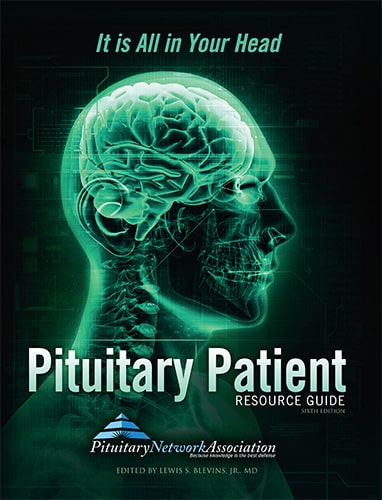
The Pituitary Patient Resource Guide Sixth Edition is now available! Be one of the first to have the most up-to-date information. The Pituitary Patient Resource Guide a one of a kind publication intended as an invaluable source of information not only for patients but also their families, physicians, and all health care providers. It contains information on symptoms, proper testing, how to get a diagnosis, and the treatment options that are available. It also includes Pituitary Network Association's patient resource listings for expert medical care.

Xeris Pharmaceuticals is valued member of the PNA



